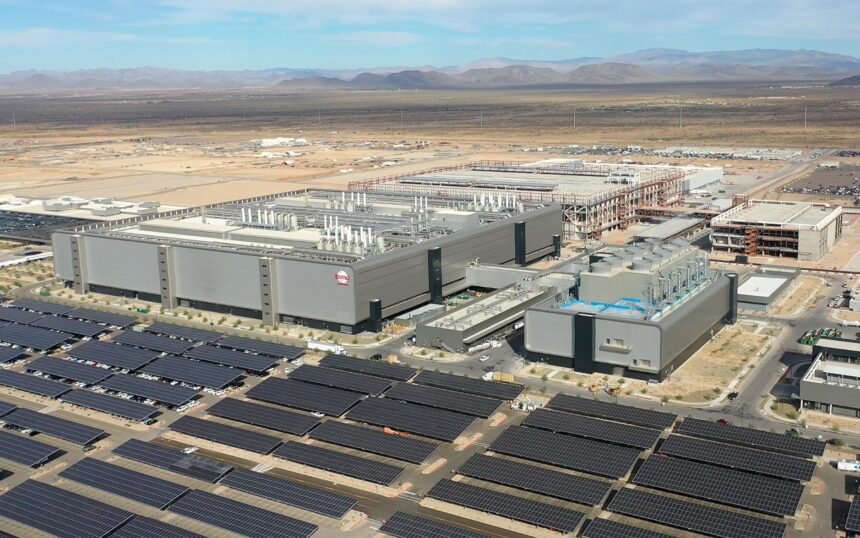Unveiling the Future: TSMC’s Game-Changing Semiconductor Factory in Arizona
A monumental advancement is underway in the deserts of Arizona, just outside of Phoenix, where a cutting-edge semiconductor factory is being constructed. This facility, established by the Taiwan Semiconductor Manufacturing Company (TSMC), is set to revolutionize the global economy and play a crucial role in addressing the logistical challenges linked to semiconductor supply chains.
Investments amounting to billions of dollars signal TSMC’s commitment to shifting production of advanced chips to the United States, marking a significant departure from their historical manufacturing base in Taiwan. This move comes as a response to possible tariffs on imported chips, showcasing the complexity of Trump’s “America First” initiative in the context of global supply chains.
The Heart of Global Semiconductor Production
The TSMC factory, aptly named “Fab 21,” is regarded as one of the most crucial production sites internationally, responsible for approximately 90% of high-tech semiconductors used globally. Products incorporating TSMC-made chips power everything from smartphones to advanced AI systems. The facility’s operations are highly confidential, with stringent protocols to protect intellectual property and proprietary designs.
A Symbol of Economic Strategy
Former President Trump frequently highlights TSMC’s investment in Arizona as a success story of his economic policies. Trump asserts that the company’s expansion—propelled by his threats of tariffs on imported semiconductors—is a manifestation of his administration’s efforts to rejuvenate American manufacturing and limit reliance on foreign technology.
China’s gaze remains fixed on the proceedings, given Taiwan’s strategic importance in the global semiconductor landscape. The Taiwanese government refers to its semiconductor capabilities as a “Silicon Shield,” meant to bolster national security amid rising tensions with Beijing.
Inside the Factory: Technological Marvels at Work
During an exclusive tour of the facility, TSMC’s Greg Jackson elaborated on the complexities of chip manufacturing. Here, the tiniest details matter immensely; the production involves thousands of precise steps to create chips that contain trillions of transistors. Workers don specialized protective gear before entering clean rooms that maintain sterile environments critical to the production process.
As explained by Konstantinos Ninios, an engineer at TSMC, the wafers of silicon being produced here represent the pinnacle of technological innovation, poised to drive advancements across various sectors. This level of sophistication in manufacturing relies heavily on intricate machinery and highly specialized components sourced globally.
Global Interdependence Amid Nationalist Policies
Despite the nationalist rhetoric surrounding TSMC’s US investment, the reality of semiconductor manufacturing reveals a web of global interdependencies. As noted by Rose Castanares, President of TSMC Arizona, no single nation possesses the complete supply chain necessary to produce chips from start to finish. Each component, from raw materials to high-precision machinery, is sourced from multiple countries.
| Aspect | Details |
|---|---|
| Investment in Arizona | $100 billion expansion announced in March 2025 |
| Chip Production | 4 nanometre chips with 10 to 14 trillion transistors |
| TSMC’s Market Share | 90% of world’s advanced semiconductors |
| Number of Manufacturing Steps | 3,000 to 4,000 individual steps per wafer |
The intricate dynamics at play, combined with the strategic importance of semiconductor technology, will continue to influence global economic policies. The TSMC Arizona facility stands as both a representation of America’s ambitions to seize the technological lead and a reminder of the deeply interconnected nature of modern manufacturing.




